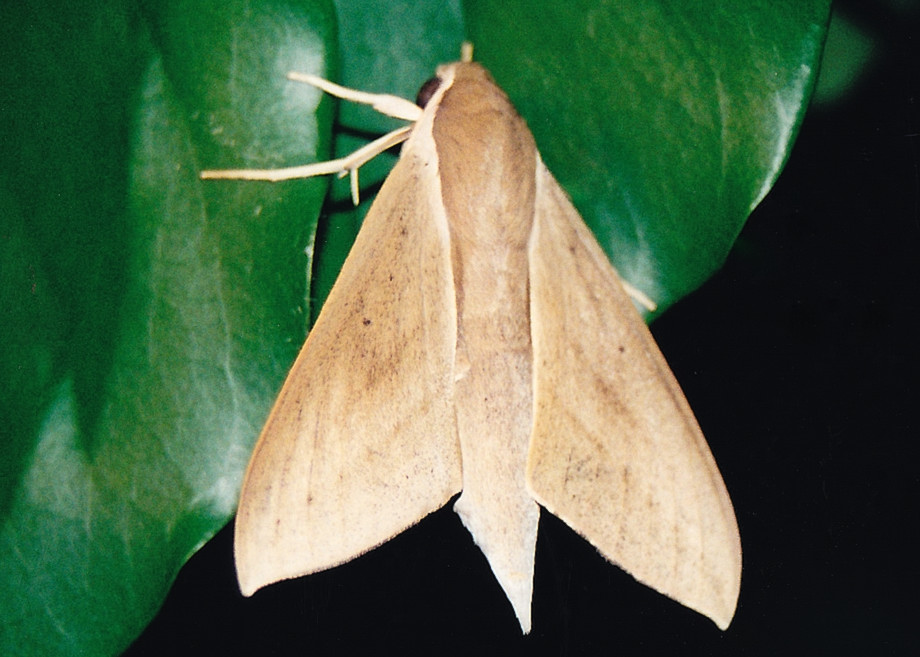Pale Brown Hawk Moth - Theretra latreillii
Family Sphingidae
- This page contains information about Pale Brown Hawk Moths that we found in the Brisbane area, Queensland, Australia.

- Body length 50mm
- The Pale Brown Hawk Moth Caterpillars have two colour form, brown and green. The brown form has the dark brown and white waves patterns on the body.
-



- The Green form caterpillar is the same body shape, green in colour and less patterns on the body.



- All of them have the curved horn on its tail and the eyespots on the first abdominal segment.



- Length 100mm
- With their eyes pattern on the first segment, they look like a small snake with large eyes. And their 'eyes' blink!! When the caterpillar is feeding, its head extended, the eyes pattern is half folded and it look like the closed eyes. When disturbed, the caterpillar hide its head back into its body and this make the eyes pattern fully open. Just look like a snake being waken up.



- We found that when the caterpillar are young, which they are too small to mimic a snake, they have another standard posture when disturbed. We can not tell what it look like. Most likely is something that their predators want to avoid, such as a paw.



- Pupa length 50mm
- The caterpillars start to turn into a pupa when they grow up to 90-100mm. They find a place on soil where covered with plants litter. They use their silk to hold those plants litter to form a small room and turn into a pupa inside. They take two days to turn from caterpillar into pupa.



- Adult body length 50mm
- About two weeks later, a moth comes out from the pupa. When it first comes out, their wings are very small. The moth has to find a vertical position to rest on quickly for their wings are expending. This take half a day for their wings to extend, dry and harden. We observed three pupa and all of them emerged at about 10-11:00pm.
- From the close up picture, we can see the coils of the moths proboscis and imagine how long it is. This is the long tongue which the moth used to sip nectar from flowers while it is hovering.

- The moth is pale brown in colour, with two dark brown lines of dots on each forewings. The thorax and the abdomen are the same pale brown colour. On its head there are the big brown eyes.


- We found that their caterpillar also like to eat grape leaf. We have a small grape plant in our backyard. In later summer 2003, we found five to six Pale Brown Hawk Moth caterpillars on the plant. Two days later, all the grape leaves were gone.
- Reference:
- 1. A Guide to Australian Moths - Paul Zborowski, Ted Edwards, CSIRO PUBLISHING, 2007, p169.
- 2. Moths of Australia - I. F. B. Common, Melbourne University Press, 1990, p415, plate 29.12, fig 42.1.
